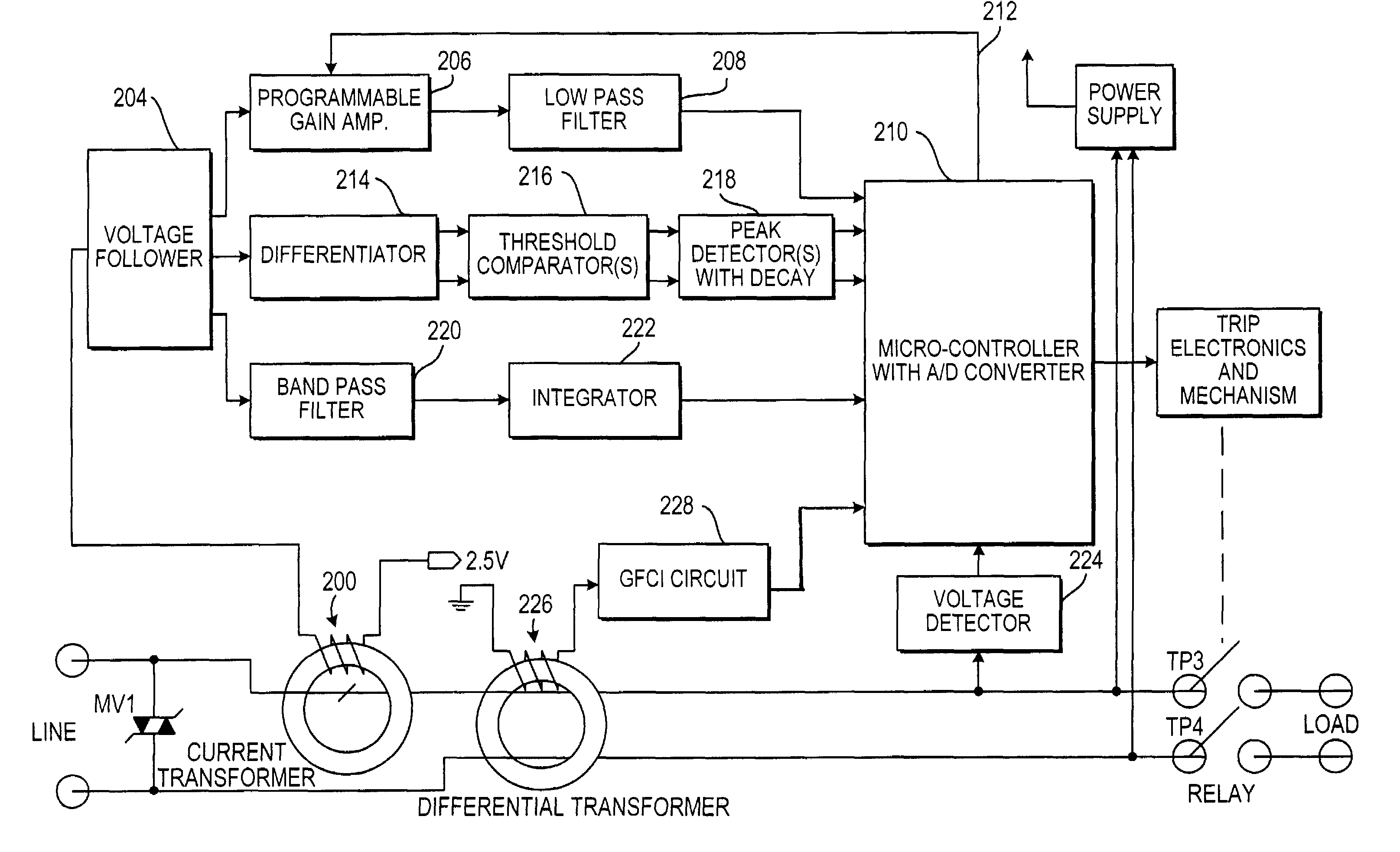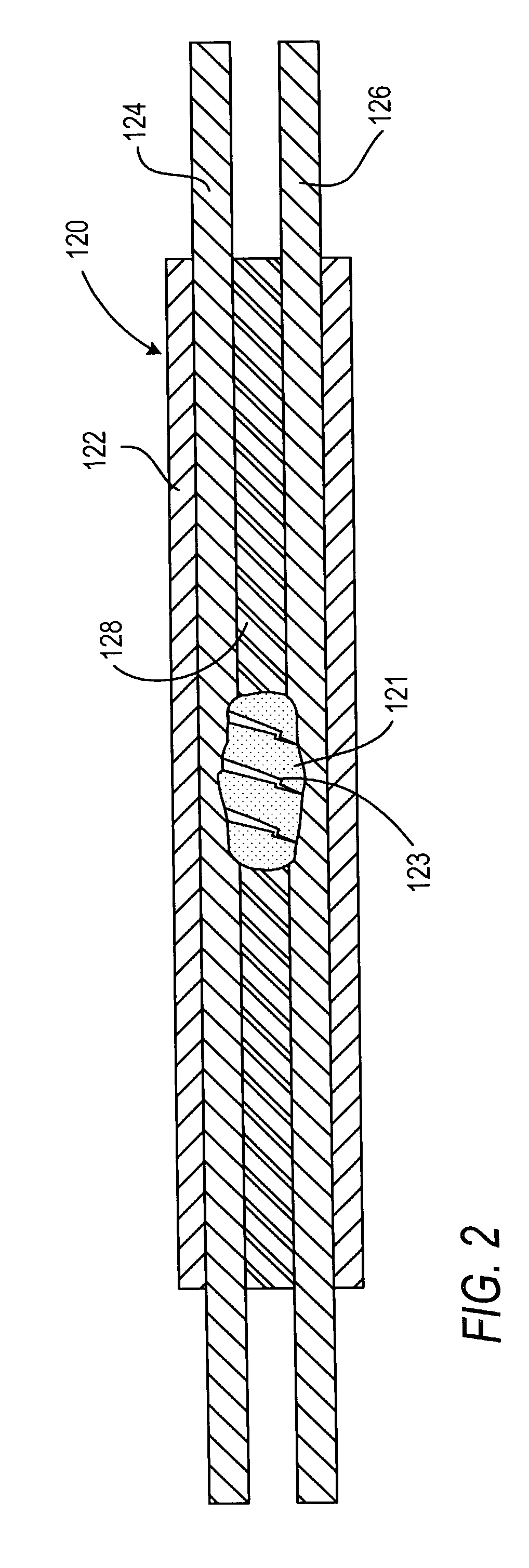Arc fault detector with circuit interrupter
a circuit interrupter and fault detector technology, applied in the direction of digital computer details, instruments, nuclear elements, etc., can solve the problems of arcs that are potentially dangerous, electrical faults that typically go undetected, and death and loss of property, so as to enhance a gfci and reduce manufacturing costs
- Summary
- Abstract
- Description
- Claims
- Application Information
AI Technical Summary
Benefits of technology
Problems solved by technology
Method used
Image
Examples
Embodiment Construction
)
[0033]Referring to FIG. 3, there is illustrated a block diagram of structure in accordance with the principles of the invention. The current waveform present on the AC line is extracted via a toroidal current to voltage transformer 200. The transformer 200 should be capable of handling high currents (e.g. 200 A) in the primary with minimal saturation; and provide high currents with minimal distortion of the signal produced on the secondary winding. Additionally, the transformer should have a bandwidth sufficient to pass the frequency signals used by the high frequency noise detection circuitry. In place of the transformer 200, a current shunt located in the line can be used. A purely resistive shunt has the benefit of not imposing a phase shift on the signal, while a current transformer has the benefit of providing isolation from the line. If a current transformer is used, one end of the secondary is referenced to 2.5 volts with the other end being connected to the input of a volta...
PUM
 Login to View More
Login to View More Abstract
Description
Claims
Application Information
 Login to View More
Login to View More - R&D
- Intellectual Property
- Life Sciences
- Materials
- Tech Scout
- Unparalleled Data Quality
- Higher Quality Content
- 60% Fewer Hallucinations
Browse by: Latest US Patents, China's latest patents, Technical Efficacy Thesaurus, Application Domain, Technology Topic, Popular Technical Reports.
© 2025 PatSnap. All rights reserved.Legal|Privacy policy|Modern Slavery Act Transparency Statement|Sitemap|About US| Contact US: help@patsnap.com



